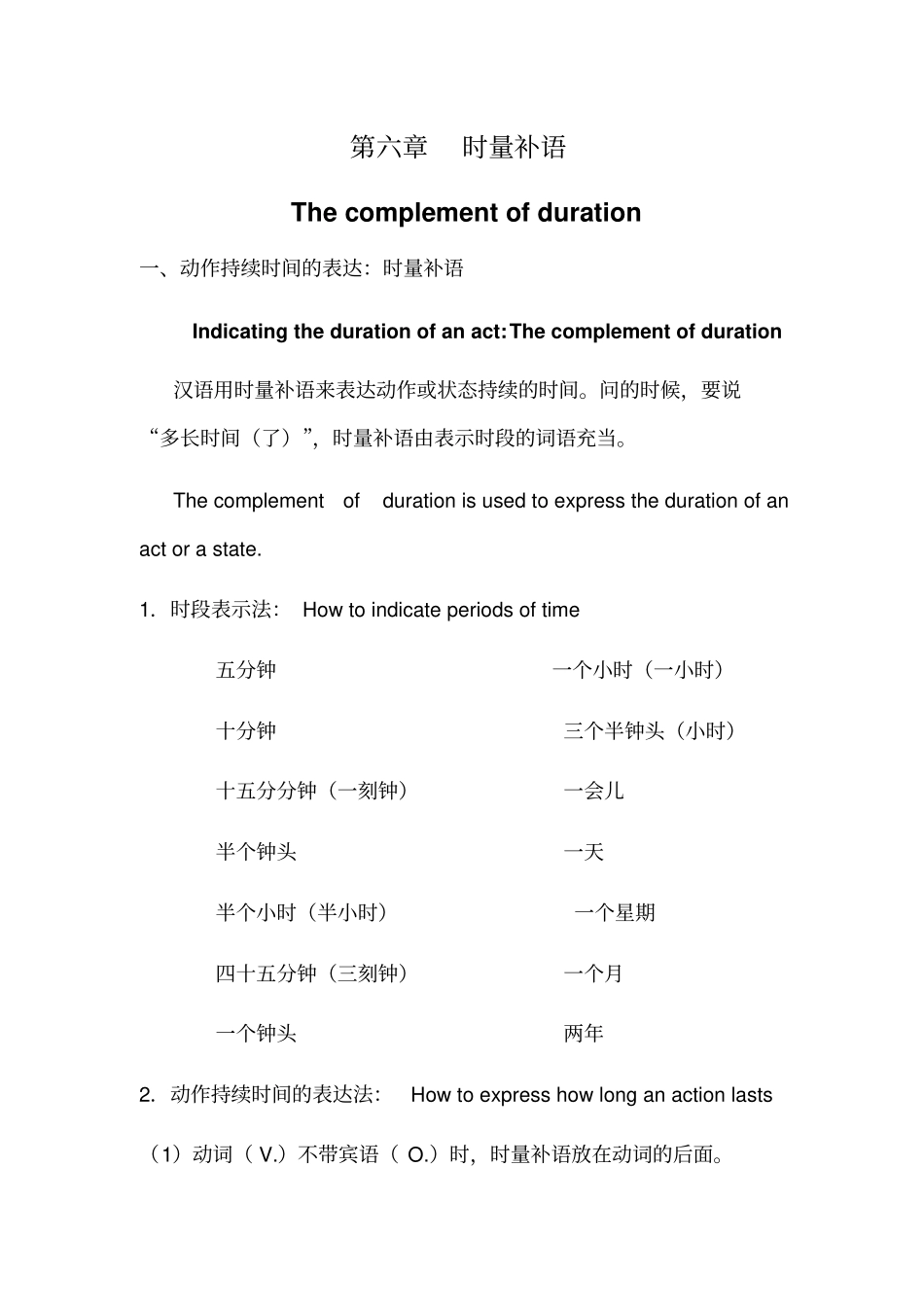第六章时量补语The complement of duration 一、动作持续时间的表达:时量补语Indicating the duration of an act:The complement of duration 汉语用时量补语来表达动作或状态持续的时间。问的时候,要说“多长时间(了)”,时量补语由表示时段的词语充当。The complement of duration is used to express the duration of an act or a state. 1.时段表示法: How to indicate periods of time 五分钟一个小时(一小时)十分钟三个半钟头(小时)十五分分钟(一刻钟)一会儿半个钟头一天半个小时(半小时)一个星期四十五分钟(三刻钟)一个月一个钟头两年2.动作持续时间的表达法:How to express how long an action lasts (1)动词( V.)不带宾语( O.)时,时量补语放在动词的后面。If the verb does not take an object , the complement of duration is placed after the verb. 句型是:主语+动词+(了)+时量补语(S.)(V.)(了)Complement of duration 我等了她一刻钟。我们等了半个钟头(小时)。他们爬了三个钟头(小时)。麦克休息了一会儿。(2)动词带宾语(或动词是离合动词)时,要重复动词,时量补语放在重复的动词的后面。If the verb takes an object(or if the verb is a clutching word) , the verb needs to be repeated and the complement is placed after the repetition. 句型是:主语 + 动词+宾语+动词 +(了)+时量补语(S.)+( V.)+(O.)+( V.)+ (了)+ Complement of duration 我们等她等了半个小时(钟头) 。他游泳游了一个下午。她学习汉语学了两个多月。我写汉字写了半个小时。(3)宾语是人称代词( personal pronoun)时,宾语要放在是量补语的后面。句型是:If the object is a personal pronoun, the complement is placed after the object. 句型是:主语 + 动词 +(了)+宾语+时量补语(S.)+(V.)+(了)+ (Pronoun) + Complement of duration 我找了你一个下午。我们等她一会儿吧。(4)动词的宾语是名词( Noun)时,时量补语可以放在动词和宾语之间,但是宾语前要加“的” 。例如:If the object is not a personal pronoun, the complement may be placed between the verb and the object and ...


